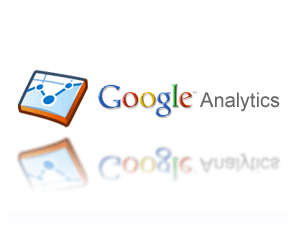Business Benefits of Web Analytics
When it comes to websites, many small business owners take the view that ‘if you build it, they will come’. But to determine success, you must find a way to measure response
To do this effectively, you need a web analytics package. It can tell you valuable information, like where your visitors are coming from, how they use your site and – to an extent – who they are.
What to measure with web analytics
To start with, don’t fall into the trap of talking about ‘hits’. This is an ambiguous label that originated in the early ‘90s when website hit counters were common. Measuring hits won’t tell you much about your website at all.
However, there are a plenty of meaningful things that you can start measuring with an analytics package.
I’ve already mentioned visitor count, which is the number of visitors your website receives. Most web analytics package will show two different visitor numbers:
- Total visitors (also called sessions). This figure counts each visit to your site, even if the same person has returned more than once.
- Unique visitors (also called users). This figure filters out repeat visits, so each person is only counted once.
Another common measurement is the number of page views. This counts how many different pages have been viewed on your website.
However, as internet technologies have evolved from page-based sites to more dynamic sites where pages can change without reloading, page views have become a less-useful measurement. Thankfully, web analytics has evolved too, introducing ‘Events’.
An event is any key action a user takes on the website. For instance:
- playing a video on a page
- ‘Liking’ a post on Facebook
- contacting you via a ‘submit form’
- placing a bid on eBay
- making a purchase
Web referrers and searches
One of the main ways websites receive traffic is from links on other sites. These are called ‘referrers’ and their data is very valuable.
For instance, if a review gets posted about your business which links to your site, your referrers will show you that the review exists. You can also see what people did on your site after reading the review.
Even more importantly, a real-time tracking system can let you know about traffic surges as they happen, so you can respond quickly if needed.
Another source of website traffic is, of course, search engines. You’ll want to know what people are typing in to find your website, and where search engines rank your business and its competitors.
Web analytics relating to search can often be enlightening because visitors may be arriving via keywords and search engines you’re not aware of.
Analysing customer data and location
Web analytics software can show you where in the world your website traffic is coming from, so you can see if you receive a surge in traffic from a new country or region.
You can also filter interesting international traffic by referrer and search data, to understand the reason for the surge. And if you have a customer in a distant city, you can identify and tag them for present and future visits, so you know who they are.
Online marketing campaigns and goals
Often there will be a sequence of visitor actions that dictate a specific event, and this is where ‘goals’ come into play. For example, you can create a goal which will track when someone purchases an item on your website and how much they spend.
You can also track visitors who made it partly through the goal but failed to complete. This is valuable information that can help you identify problems with your online order process.
If you are expecting traffic from adverts, set up ‘campaigns’ which can track traffic specifically from your adverts. You should have a goal in mind for visitors who arrive at your site – and you can attach this goal to the campaign in order to see how well your adverts are working.
Measuring social media
Many businesses are now using social media to connect with new and existing customers. You can also use it to find out what people are saying about your company, who these people are and who might be listening to what they’re saying.
The most popular social networks include Twitter and Facebook. Conversations are endless on these sites, and web analytics tools can help you cut through the noise. For instance, Clicky– has a Twitter monitoring feature. You can also use a service like Klout to see the influence of people who are talking about you.
Although web analytics can seem overwhelming at first, it can reveal highly valuable data. To get the most out of your web analytics package, get into the habit of measuring web traffic daily. You’ll soon be spotting trends and coming up with ideas to improve your website’s performance.
Team Discovery Ltd recommends Google Analytics and Clicky Analytics.



